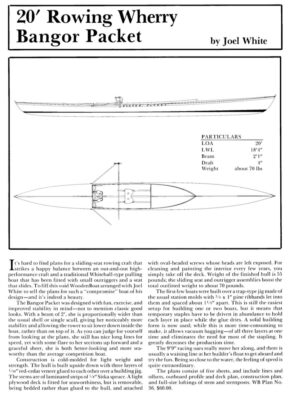
20' Bangor Packet Rowing Wherry
The original print version of this article can be viewed as a PDF or purchased from the WoodenBoat Store.
Join to view PDF Purchase Plans for the 20' Bangor Packet Rowing WherryIt’s hard to find plans for a sliding-seat rowing craft that strikes a happy balance between an out-and-out high performance craft and a traditional Whitehall-type pulling boat that has been fitted with small outriggers and a seat that slides. To fill this void, WoodenBoat arranged with Joel White to sell the plans for such a “compromise” boat of his design — and it’s indeed a beauty.
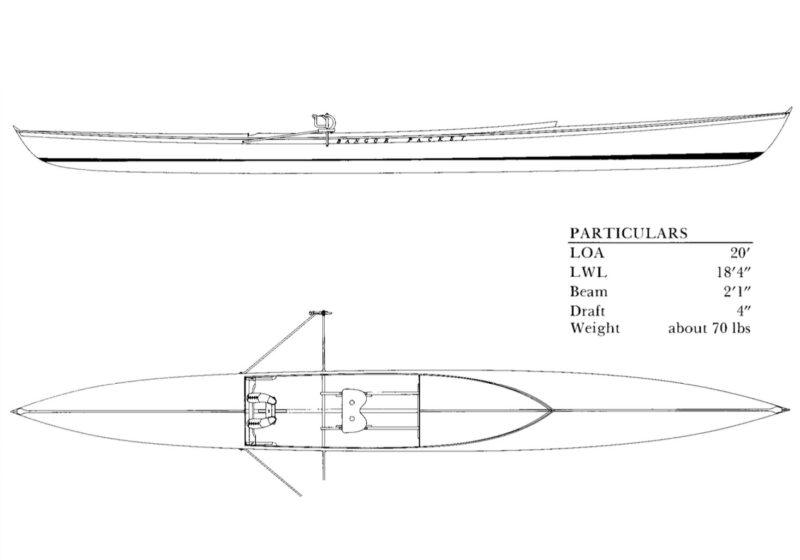 Dave Dillion
Dave DillionParticulars
The Bangor Packet was designed with fun, exercise, and improved stability in mind — not to mention classic good looks. With a beam of 2′, she is proportionally wider than the usual shell or single scull, giving her noticeably more stability and allowing the rower to sit lower down inside the boat, rather than on top of it. As you can judge for yourself from looking at the plans, she still has nice long lines for speed, yet with some flare to her sections up forward and a graceful sheer, she is both better-looking and more seaworthy than the average competition boat.
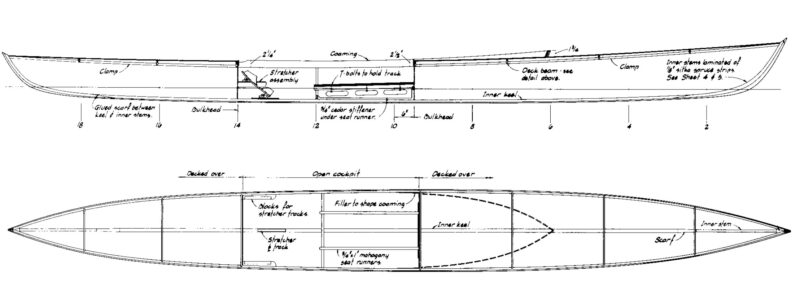 Dave Dillion
Dave DillionPlans
Construction is cold-molded for light weight and strength. The hull is built upside down with three layers of 1/16″ red-cedar veneer glued to each other over a building jig. The stems are of laminated strips of 1/8″ Sitka spruce. A light plywood deck is fitted for seaworthiness, but is removable, being bedded rather than glued to the hull, and attached with oval-headed screws whose heads are left exposed. For cleaning and painting the interior every few years, you simply take off the deck. Weight of the finished hull is 55 pounds; the sliding seat and outrigger assemblies boost the total outfitted weight to about 70 pounds.
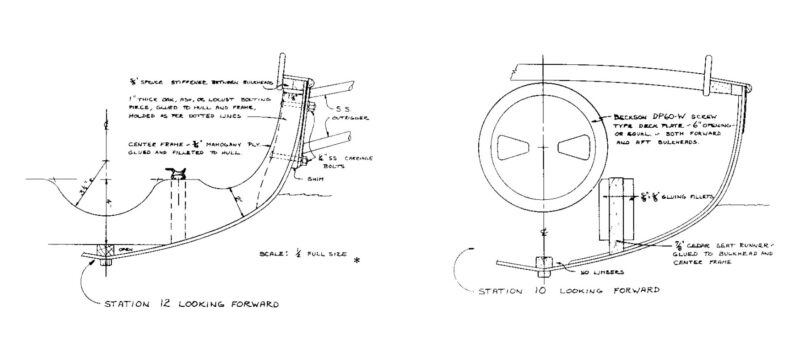 Dave Dillion
Dave DillionPlans
The first few boats were built over a trap-type jig made of the usual station molds with 3/4 x l” pine ribbands let into them and spaced about 1 ½” apart. This is still the easiest setup for building one or two boats, but it means that temporary staples have to be driven in abundance to hold each layer in place while the glue dries.
A solid building form is now used; while this is more time-consuming to make, it allows vacuum-bagging of all three layers at one time and eliminates the need for most of the stapling. It greatly decreases the production time. The 9’9″ racing oars really move her along, and there is usually a waiting line at her builder’s float to get aboard and try the fun. Being so close to the water, the feeling of speed is quite extraordinary.
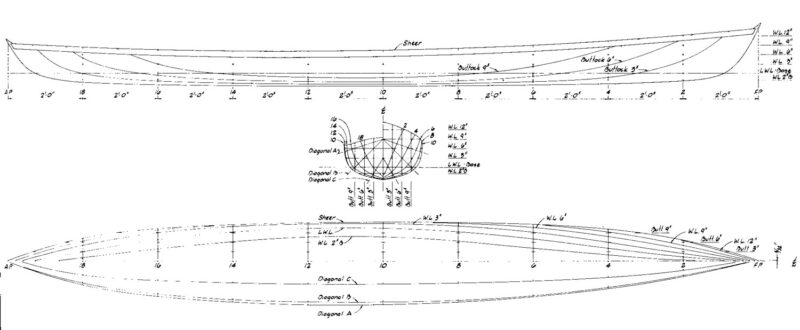 Dave Dillion
Dave DillionLine Drawings
Plans for the Bangor Packet Rowing Wherry consist of five sheets, and include lines and offsets, outboard profile and deck plan, construction plan, and full-size loftings of stem and sternposts. WB Plan No. 36. $60.00.
Completed 20′ Bangor Packet Rowing Wherry Image

Lightweight and reasonably seaworthy, the Bangor Packet Rowing Wherry features a sliding seat and outriggers.
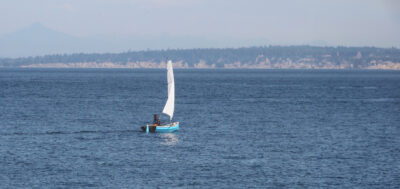
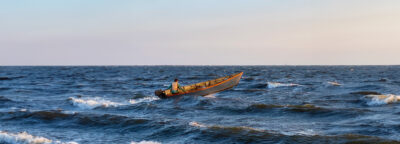

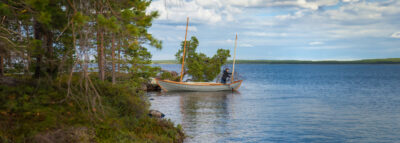
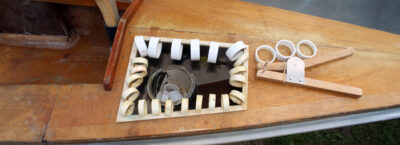
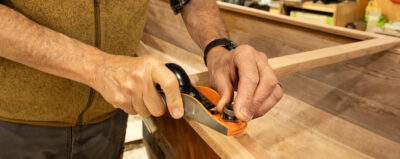
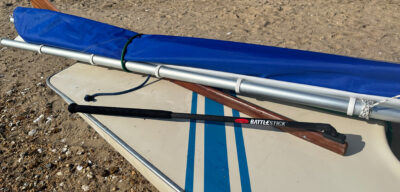
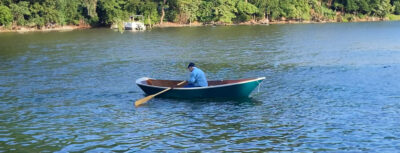
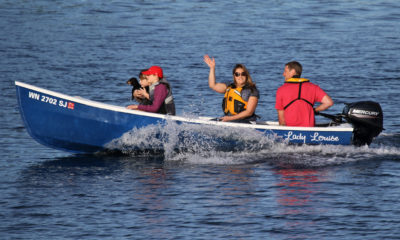
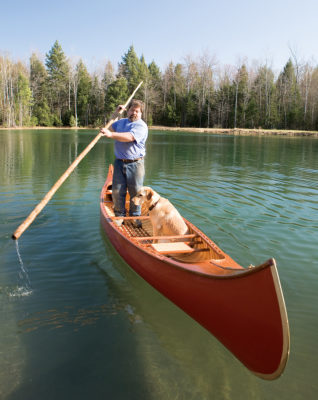
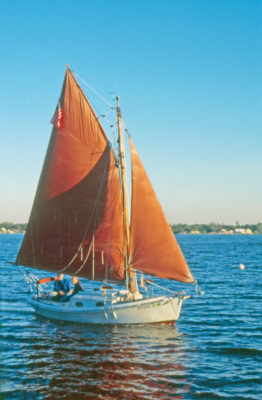
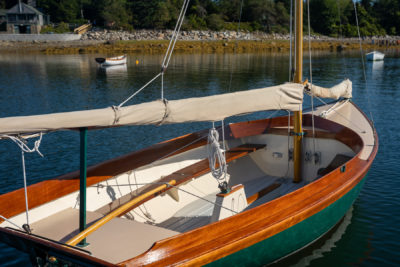
It would ge good to have “stitch and glue” drawings for the boat. This may not be straight forward to put together, but would enagle a DIY builder to make and enjoy this beautiful boat. Thanks,